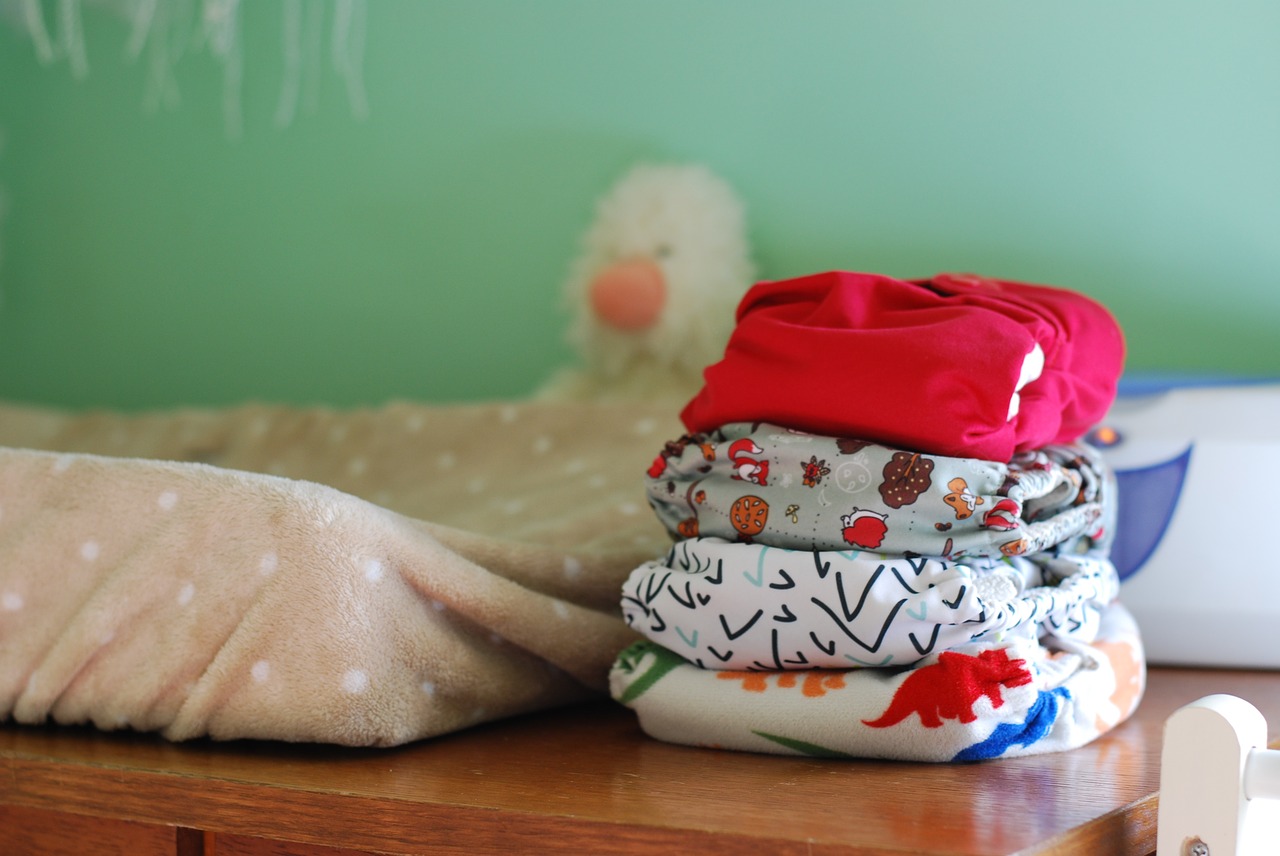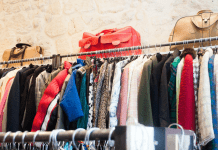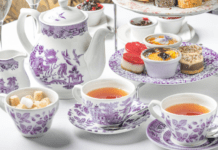 Before I was in the know about modern-day CDing (‘cloth-diapering’ for you newbies), the phrase ‘cloth diaper’ evoked images of mountains of cloth jumbled up around baby’s bottom and held together precariously with safety pins. In fact, when I was pregnant I told one of my sisters we planned to CD our son and she said “Why would you want to mess with all that? It’s so complicated!”
Before I was in the know about modern-day CDing (‘cloth-diapering’ for you newbies), the phrase ‘cloth diaper’ evoked images of mountains of cloth jumbled up around baby’s bottom and held together precariously with safety pins. In fact, when I was pregnant I told one of my sisters we planned to CD our son and she said “Why would you want to mess with all that? It’s so complicated!”
If cloth diapers were still like your grandmother’s cloth diaper, there’s no way in h-e-double-hockey-sticks I would be CDing our son today. But they’re not (#thankyoubumgenius), so I’m here to share some info, tips, and tricks that have worked for us so far!

First of all, there are all kinds of words/abbreviations/acronyms people use to describe cloth diapers and CDing, but those are easy enough to find on the Internet so I won’t touch on that here (but here is a good link if you’re lazy #itsokayimlazytoo).
Second of all, YES, you have to wash pee and poop diapers in your washer. This is a dealbreaker for a lot of people, but only if you’re a giant weenie. Just kidding! But seriously, be prepared eventually to have to scrape poop into toilets, swish diapers around to loosen poop, and spray diapers to free the poop.
Third of all, CDing saves you tons of money in the long-run (we’re talking thousands of dollars in diaper-wearing years), but it does cost a good bit to get started (not counting a few diapers we received as baby shower gifts, we still spent at least $500 on CDing materials). Of course, you can find used diaper items online (here is a local group on Facebook) if you don’t mind that kind of thing!
Now, let’s talk about common types of cloth diapers really quickly:
- All-in-one (my favorite, and no, not just because I’m lazy! #butalsoyesbecauseimlazy): a cloth diaper with all of the pieces attached (i.e., no need for inserts and no pockets to have to dig poop out of).
- All-in-two: a cloth diaper with snaps to attach the insert (so that you can just reuse the diaper shell and change the insert if the bathroom incident isn’t too messy).
- Fitted: a fabric cloth diaper that usually has elastic around the legs and snaps or pins onto baby, but has no waterproof layer so a cover is required.
- Pocket: a cloth diaper with a “pocket” where you place the insert to absorb baby’s bathroom leavings.
As indicated by the name, all-in-ones (AIOs) are the only cloth diapers with everything built-in. Every other diaper requires some combination of inserts, pins, or covers.
- Inserts are the absorbent materials in the diaper and are often made of microfiber (not to be placed against baby’s skin), cotton, bamboo, and hemp. They are available in one piece (like these: bamboo, hemp, microfiber), as flats (one large layer of cloth which can be folded around baby and pinned, like these), and as prefolds (multi-layered pieces of cloth which can be folded around baby and pinned, like these).
- Pins are self-explanatory, but most people nowadays use the Snappi to hold the diaper together. They are generally easier to use on squirmy babies and don’t have super sharp points by which to stick mama when baby struggles against the diaper change (babies struggling against a diaper change? Weird. It’s like they want to sit in pools of pee and poop all day…). But if you like to live life on the edge, go ahead and try the pins.
- Covers are the protective, water-proof layer that goes on the outside of the “diaper” (the cloth part). Covers are often made of plastic, vinyl, polyester, fleece, and wool. They usually snap, button, or velcro on, and are reusable throughout the day depending on the messy factor (just replace the cloth diaper inside and snap the cover back around baby). Here are a few popular ones: Thirsties, Rumparooz, Best Bottom, Blueberry, and flip.

Okay, whew, you’re probably feeling a little overwhelmed at this point. I get it. I researched and researched and researched until I drove myself crazy trying to pick out a good “stash” with which to start. And picking out a good stash of diapers without knowing how your baby is going to pee and poop (how much, how often, how messy) or how big he/she will be (which matters to how the diapers fit) seems a nearly impossible feat. But it’s not! Here are a few tips to getting started:
-
Get a few different types of diapers you know you would be comfortable dealing with. If you know you don’t want to mess with having to fold a flat into a fancy design to fit around your baby, then you should probably go with a one-piece insert, an AIO, or an AI2 (all-in-two). If you know you don’t want to mess with pulling out inserts or Snappi-ing cloth diapers around your baby, you should probably go with an AIO or an AI2. If you don’t want to mess with potentially getting baby pee or poop on your hands from any type of diaper, you should probably not have a baby.
-
If you want to save some money on new diapers, the cheapest route is to buy flats, pins, and covers. Just remember that this entails learning said fancy designs mentioned above (and will require practice before the baby is born).
-
Decide what size diaper you want to get. You can buy one-size diapers which are adjustable throughout the life of baby’s diaper-wearing years, or you can buy diapers to fit baby according to his/her weight. There are pros and cons to both. You definitely save money buying one-size diapers, but you also run the risk of them not being as adjustable to your baby as a sized diaper would be.
-
They tell you to use special detergent, but we used one of the more popular detergents targeted at CDers and found no difference between it and our regular, non-scented Kirkland’s brand detergent from Costco. So, don’t fret if you can’t afford $25 for a tiny tub of detergent. You can probably keep using what you’re using now!
-
Wash all the absorbent cloth diaper parts (AIOs, fitteds, inserts, flats, prefolds) a million, billion times before baby is born! The more you wash and dry, the more the fibers open up and become absorbent.
-
Talk to your friends! Everyone loves to tell you what works best for them and why. And that way you have less information to sort through than the whole of the Internet (especially if you’re like me and you only have five friends)!
If you’re going all the way with CDing, you’ll need a few extra bits as well. We use these cloth wipes and this container to store them in (fold them in thirds so the seam is in the middle and you can pull them out like you would disposable wipes). This DIY solution works great for cleaning and disinfecting little bottoms (we use a spray bottle instead of a foam dispenser). You’ll need a wet bag to store diapers in until cleaning day; we use this one and it works great at containing smells. To air-dry, you’ll need some kind of clothes line, rack, or hanger; we use this one and it holds 16 heavy AIO diapers with no issue.

Lastly, I’m going to tell you which diapers worked best for us and why:
We started out using small prefolds, Snappis, and covers. Our favorite prefolds were those by OsoCozy (which also make excellent burp cloths!), and we LOVED the Blueberry covers. We got one-size Blueberry covers, which are double-gusseted (inner and out elastic leg holes to help prevent against leaks), and they were amazing. If I recall, and it’s possible I don’t (Mommy Brain, anyone?!), we had zero blow-outs using those.
After our son outgrew the small prefolds, we transitioned straight into the BumGenius Freetime AIO. We have been using the BG (BumGenius) AIOs for about a year now and they work as good as ever. There are two “insert” pieces attached to each end of the diaper so that you can fold them to absorb more where baby pees the most (depending on the baby’s sex and urine output). And they adjust as baby grows! There were a couple of phases of our son’s growth when I could not adjust the snaps just perfectly to fit snugly but not-too-snugly, but I still don’t recall there being many instances of leakage (realistically, no diaper is 100% leak-proof anyway).
The only real con I can think of with AIOs is that they take FOREVER to air-dry. Ideally, you don’t want to dry any of your diapers containing elastic too often because the heat can weaken or damage the elastic. So, in order to use only AIOs (like we do), you have to have a decent stash to allow for air-dry times after washing. We have 22 AIOs and at this point in time we can usually go two full days without washing diapers. Of course, in this volcano-like heat (#climatechangeisforrealguys), we can go three days without washing, throw everything in the washer, hang it out to dry in direct sunlight, and we have a fresh stash of dry diapers in one hour or less!

















What is your normal washing routine? I have mostly pockets and a few AIOs (they DO take forever to air dry!). I first do a warm rinse (no hot option on my washer), wash hot with a second rinse and dry on low or air dry. I’ve been CD’ing for about three months and just yesterday noticed some of the freshly washed diapers have a weird smell. What do you do when (if) that happens to your stash?
Hi Terra! Your wash routine sounds good to me. From what I’ve read, warm/hot water works better to get out smells and cold water works better to get out stains. We usually just do a cold wash with an extra rinse, depending on the state of the diapers. Periodically, I let the diapers soak in the washer on warm/hot before running the cycle–I’ll put in some detergent and either 1) a scoop of some oxygen-type cleaner or 2) some vinegar and baking soda. This works great on smells. They do still smell slightly of ammonia sometimes, but that’s normal! Another thing that has helped me to lighten the smell is to air-dry them in direct sunlight. How often are you washing your diapers? That might play a part, too.
[…] I was pregnant with my first child, cloth diapering hadn’t even crossed my mind. We entered parenthood armed with boxes of Swaddlers and Huggies. […]
Comments are closed.